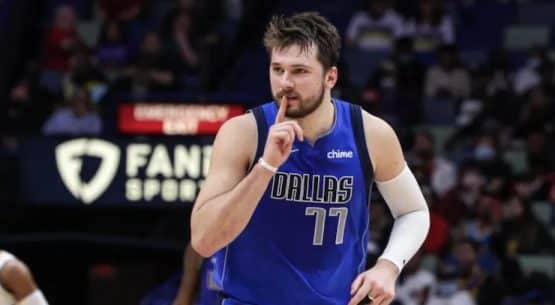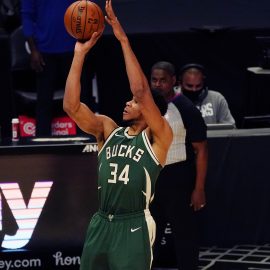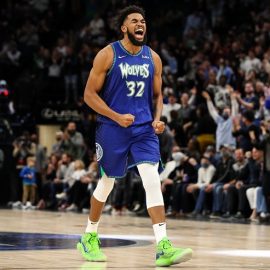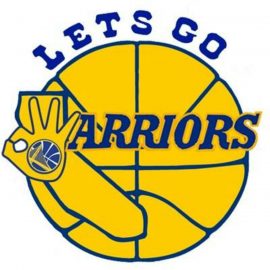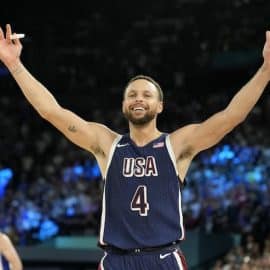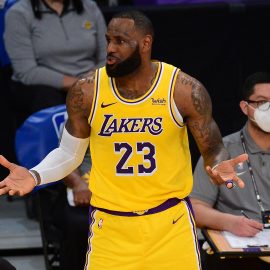Taking a rudimentary dive into the advanced stats paints an interesting picture.
The question of Paul Millsap’s value to a team like the Timberwolves is more complex than it may seem.
[ Related: THE WINNER OF THE PAUL MILLSAP SWEEPSTAKES? THE TIMBERWOLVES! (PART 1) ]
This hypothetical is based on the assumption that Gorgui Dieng, Cole Aldrich, and the Thunder’s lotto-protected 2018 pick would have all been moved to bring Millsap into the fold (not to mention making the Gibson signing impossible).
It also takes into account the team’s glaring need for floor spacing and post defense while not having any extra isolation offensive possessions to go around.
With Jimmy Butler, Andrew Wiggins, and Karl-Anthony Towns as focal points of the offense, all of whom need a high volume of touches to be successful, the need for the right complimentary pieces is crucial.
https://youtu.be/uju-ot56KAQ?t=21s
To start, Millsap’s 2016-17 usage rate was 24.4% and his career average is 22.2%. While that resulted in an impressive 17.3 assist percentage and respectable true shooting percentage of 54.2, it came at the expense of a number of offensive possessions.
Add that number to the total usage rates of the Wolves’ other four starters and the sum is 129.5%. Who in this lineup would be forced to heavily adapt their game to the high usage styles of the others?
Likely, this would immensely minimize Wiggins’ game at a crucial point in his career as he looks to take the next step towards his potential and push Teague into an entirely off ball, spot up role.
Would that be the case, it should be argued that Teague’s substantial deal and Wiggins’ looming max contract could not be justified due in large part to their redundancies within the offense.
Millsap vs. Dieng
Take the four starters currently on the roster and substitute Gorgui Dieng for Millsap, whose usage rate in 2016-17 was a much more modest 14%, and that greatly helps to free up the log jam of offensive possessions.
Once again, taking roll of the four core Wolves starters, the largest clear deficiency is 3-point shooting. Millsap has respectable 3-point stats for his position. During the 2016 season, he attempted a long range shot on 24.8% of his possession, with a success rate of 31.1%.
That would place him dead last in the Wolves’ starting five, with the other four each averaging between 35.6-36.7%.
Meanwhile, though he only attempted a three every other game (.5 attempts/gm), Gorgui hit an impressive 37.2% of his long range shots.
Anyone who watched any number of Wolves games last year will know that it takes Dieng upwards of a week to set himself and get a three point shot off, but we need to ask ourselves if that really matters.
With ball dominant wings and an all-world front court mate running pick and rolls and isolation plays on the other side of the floor, Gorgui will find himself standing alone in the corner often.
https://www.youtube.com/watch?v=2UNXLUZQR3E
The eye test showed that Gorgui got much more comfortable shooting from distance as the year went along and his attempts became more consistent and confident.
Should he continue the current trajectory, 16.7% in 2014-15 to 30% in 2015-16 to 37.2% last year, he should fit well into the spot up shooter role that is evidently missing without him on the floor. His spacing capabilities should also clear space under the basket when he shares the floor with Gibson.
Millsap vs. Gibson
On the topic of Taj Gibson, he clearly fills the Wolves need for staunch front court defense. While Millsap is statistically the better defensive option, averaging 8 rebounds, 1.4 steals, and 1 block per 36 minutes, his $30 million/year contract does not justify the value over Gibson’s 7.6 rebounds, 1 steal, and 1.1 blocks per 36.
Last year, Gibson also touted a higher total rebounding percentage and block percentage (13.2/2.6) than Millsap (12.5/2.3). Gibson’s experience in Thibodeau’s defensive system should also not be discounted, as we’ve seen firsthand how unpleasant it can be adapting to his complex schemes.
Thibodeau’s tendency to play his starters for an extensive number of minutes may or may not have factored into Millsap’s decision to head to Denver. It would not however have been a real concern for the Wolves because they are completely top heavy and lack an ability to sign an adequate bench.
Millsap has averaged 29.5 minutes per game over his career, going over 34 minutes per game in two seasons. As he ages in the league, it would be fair to expect his efficiency to become tied to minutes played and demands placed on him at some point.
The ability to have Dieng (+/- $16 million) and Gibson ($14 million) under contract for the same price as Millsap in itself feels like a net positive. It should also be mentioned that Millsap’s VORP (value over replacement player) is a 2.7 rating while Gorgui’s (though less) is still a very respectable 2.5.
While Millsap’s star power and skills cannot be discounted, it can be argued that his fit within the team system would not be enough of a clear benefit to jettison positional depth and already limited future assets.
Millsap vs. Wiggins
Looking forward, there is a chance that much of this is a moot point if Thibodeau and Layden decide to move Gorgui to bolster bench depth.
Conversely, if they find a way to dance around the salary cap and fill out the roster with effective support for the undeniably talented core of Towns, Butler, and Wiggins, the front court will be in good hands.
Stepping back from the Millsap sweepstakes also will afford Andrew Wiggins the opportunity to continue his growth with the team. As the organization re-tools in an effort to break the league’s longest playoff drought, they cannot lose sight of the future of the franchise which rests squarely on the shoulders of 21 year old Karl-Anthony Towns.
This is a player who will provide the team with many cracks at the ultimate goal of winning a championship.
It is far too early in his career to mortgage the farm for a short window of competing with prize fighters such as the Warriors, Spurs, Cavs, and Rockets.
This narrative may change over the next year or two. We may even see more major moves made this summer, but that should not distract from the main point: the Wolves are going to be pretty good this year
They should be pretty good for years to come.
All stats referenced courtesy of Basketball Reference
Add The Sports Daily to your Google News Feed!

